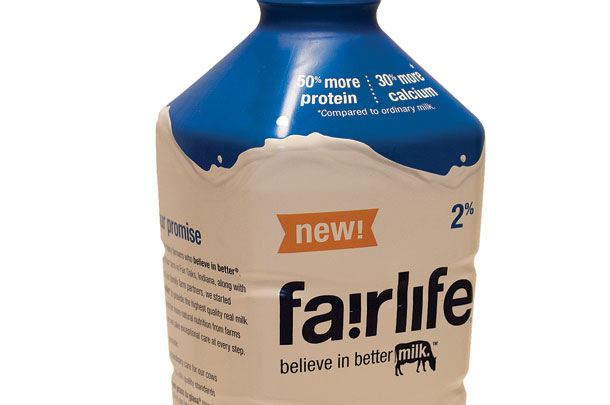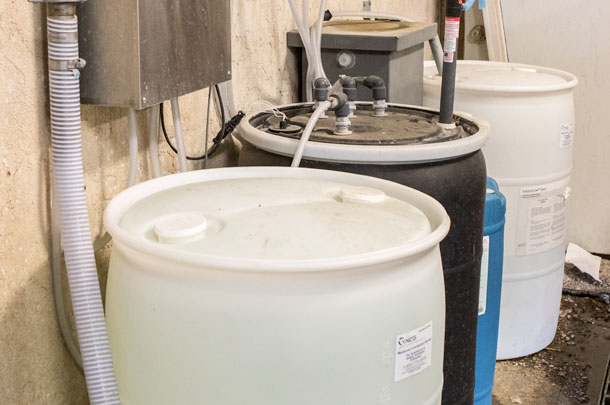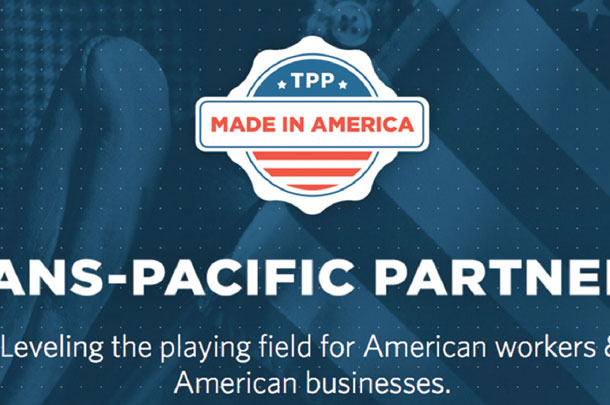Judges rule manure is a ‘pollutant’ Two separate court decisions made near the beginning of the year will have a major role in how manure will be viewed and handled for years to come.
The first was announced on Dec. 30, when the Wisconsin Supreme Court reversed a court of appeals decision, holding that manure that contaminates a well is a “pollutant.” Therefore, it cannot be covered under a farm’s general liability insurance policy.
The National Law Review states, “This is a precedent-setting decision, and it will affect whether farms in Wisconsin that allegedly cause the contamination of wells with manure will be able to rely on insurance to pay for damages.”
For now, this decision is only binding in Wisconsin.
Just two weeks later, a federal judge ruled in a separate case that manure from livestock facilities can be regulated as solid waste. Judge Thomas Rice of the U.S. District Court for the Eastern District of Washington ruled that Cow Palace Dairy of Granger, Washington, polluted groundwater by overapplying manure to soil. It was the latest development in a years-long chain of events affecting dairies in Washington’s Yakima County.
The ruling that manure is classified as a solid waste if overapplied makes the action a violation of the Resource Conservation and Recovery Act (RCRA), which was enacted by Congress in 1976 to protect people and the environment from solid and hazardous waste. The act was intended to regulate sources of waste such as underground storage tanks and municipal landfills. An attorney for Cow Palace Dairy said it plans to ask for an appeal.
More than half of U.S. dairy farms enroll in Margin Protection Program
On Jan. 12, USDA Secretary Tom Vilsack announced in a press release that more than 23,000 of the nation’s dairy operations – more than half of all dairy farms (and approximately 80 percent of the milk supply) in America – had enrolled in a new safety net program, created by the 2014 Farm Bill, known as the Margin Protection Program (MPP). The voluntary program provides financial assistance to participating farmers when the milk margin – the difference between the price of milk and feed costs – falls below the coverage level selected by the farmer. Vilsack said enrollment in the program “far exceeded our expectations in the first year.”
The MPP offers dairy producers a range of choices of protection. Starting with basic coverage for an administrative fee of $100, producers can select higher levels of coverage at incremental premiums. More than half of the applicants selected higher coverage beyond the basic level. 
Producers holding coverage at the $8-per-hundredweight level received payments throughout the year, as the average actual dairy production margin fell below that level for the first four pay periods in 2015.
A new enrollment period for calendar year 2016 began on July 1. To aid dairy producers in the decision to sign up, the National Milk Producers Federation (NMPF) updated its online tools for dairy farmers, which can be found online (www.futurefordairy.com). Even with the assistance of these tools, dairy producers needed more than a three-month window to enroll. For the second year in a row, Secretary Vilsack granted an extension (until Nov. 20) for the enrollment period.
New Fairlife milk product scores in first year on the shelves
When a company as large as Coca-Cola announced it had a new retail milk product, it started making headlines. Early in year, the beverage company said its new product line, Fairlife, would soon be distributed nationwide.
The company marketed the ultra-filtered milk as having 50 percent more protein and calcium and significantly reduced fat, sugar and lactate content, thanks to a new cold-filtration process developed in partnership with Select Milk Producers, a cooperative of more than 90 family dairy farms.
Business Week reported that putting Coca-Cola’s legendary advertising and branding power behind this product represents an attempt to bring valuable branding to the notoriously fragmented milk market. 
Another way to gain brand awareness is to ride the wave of a trending topic in social media. Six-year-old Brady Carpenter won the hearts of many when, at an Aug. 6 press conference, he asked University of Michigan’s head football coach Jim Harbaugh “How much milk do I have to drink to be big enough to be quarterback?” Harbaugh’s response: “As much as your little belly can hold.”
As the video of this conversation went viral, Fairlife reacted by providing Carpenter with a lifetime supply of its ultra-filtered milk and a personal tour of Fairlife’s flagship dairy farm in Fair Oaks, Indiana.
Nixing NPEs from teat dips
Though nonylphenol ethoxylates, or NPEs, have been on their way out of teat dips for a while, things became more official this past year when China banned the use of NPEs in milk production products. NPEs were a key component in iodine-based teat dips, binding the iodine and keeping it in suspension. But the issue is that they can leave residues in milk.
NPEs may still be used on a dairy as external surface cleaners. Ecolab and DeLaval now both offer NPE-free teat dips. While the National Mastitis Council does not test teat dips, it does recommend protocols for testing the efficacy of teat disinfectants and provides protocols for researchers and manufacturers to follow when evaluating teat dips.

The council is currently working on a fact sheet to address concerns with NPEs.
FDA finds 99 percent of bulk tank milk samples are residue-free
A highly anticipated FDA report released earlier this year turned out to be 99 percent good news for the dairy industry.
The FDA’s Center for Veterinary Medicine began a testing process to evaluate bulk tank milk samples in November 2010 and released the results March 5, 2015. Out of 1,912 samples, 15 tested positive, meaning that 0.78 percent of the samples were confirmed with at least one drug residue.
Of the drug residues found, almost none are currently required to be tested for as part of Grade A milk regulations. NMPF Senior Vice President of Communications Chris Galen anticipated the FDA results would be thoroughly discussed at the National Conference on Interstate Milk Shipments (NCIMS) in April.

“We’re going to be carefully looking at those [FDA] proposals during NCIMS to see if they enhance the safety of the milk supply,” Galen said. “I think the FDA is going to say, ‘What else can be done beyond our current testing that might further embellish the health of the milk supply?’”
According to an International Dairy Foods Association news release following the event, attendees did take action.
“The NCIMS committee tasked with modifying drug residue-testing programs will work over the next two years to determine appropriate rapid testing methods and raw milk tanker sampling frequencies for conducting these expanded drug residue tests,” the release stated.
“The attendees also agreed on new procedures that will allow for voluntary testing for non-beta lactam drug residues using test methods that are available in the market but not yet reviewed or approved by the FDA and the NCIMS, which is a goal IDFA members have had for some time. Implementation of requirements for testing milk tankers for additional drugs will take effect no earlier than 2017, and the industry will have the needed flexibility to conduct voluntary testing for other types of drug residues in milk.”
DFA takes a proactive approach to undercover videos and Idaho’s ‘ag gag’ law is overturned
Every year, animal activist groups release a number of animal abuse videos from a variety of animal operations, including dairy. This year, however, the Dairy Farmers of America (DFA) turned the tables on them. Instead of waiting for Mercy for Animals (MFA) to release the video they captured on a DFA member’s dairy, DFA released it themselves.
Monica Massey, DFA’s senior vice president of corporate affairs, called MFA out on their underhanded tactics in a press release regarding the incident.
She said in a statement, “It is extremely frustrating and ineffective to simply record activities that go against industry and farm practices and protocols rather than report it immediately. For groups that claim to have animal care and welfare as their sole mission, they seem to spend a lot of time simply observing what they think is the inhumane treatment of animals instead of stopping it. Abuse should be reported, not recorded.”
Unfortunately, the battle against animal activist videos continues on even in Idaho, a state that had previously enacted an “ag gag bill” which was designed to impede secret filming and recording of animal handling procedures in Idaho’s agriculture facilities. But the win for agriculture was short-lived. This past summer, an Idaho judge overruled the law on the grounds that it was unconstitutional and violated the First Amendment. The state may appeal the law to the U.S. Supreme Court.
A handful of other states have similar “ag gag” laws in effect. Time will tell if this ruling is the first step to overturning those laws as well.
Trans-Pacific Partnership moves forward, U.S. dairy’s support for deal still unknown
A 12-nation trade deal, known as the Trans-Pacific Partnership (TPP), has captured the attention of dairy producers in the U.S., Canada and New Zealand throughout 2015. Other nations involved in negotiations include Australia, Japan, Malaysia, Mexico, Peru, Vietnam, Chile, Brunei and Singapore. The deal’s dairy trade provisions have been one of the stickier points of negotiation. 
The deal made significant progress in 2015.
In June, Congress passed trade promotion authority. This allows the president to negotiate directly with participating nations and present Congress with a deal on the outcome for an up or down vote. No amendments to the deal may be permitted. This authority has been critical in previous trade deals in the modern era.
In October, representatives from the deal’s member nations met in Atlanta for final negotiations and emerged with news: A final agreement had been reached.
In November, the entire 900-plus-page trade deal was released to the public. Even as of this issue’s print deadline, industry sector analysts were still reviewing the deal’s fine print and analyzing its tariff and quota allotments to determine if the deal is favorable to their specific industries.
The dairy sector in the U.S. remains mum as to whether it will support the deal. At deadline, NMPF’s official statement on the proposed trade deal was: “Until the details have been fully assessed, we are unable to determine the full impact of the agreement on the dairy industry and whether or not we recommend that members of Congress support it.”
Other agriculture industries came out quickly in support of the deal. The American Feed Industry Association issued the following statement in November: “AFIA is grateful for the U.S. Trade Representative’s efforts in negotiating an agreement that offers new opportunities for U.S. feed, feed ingredients, pet food and feed equipment exports.”
And already one group in Canada has indicated support for the deal. The Dairy Farmers of Canada, a lobbying and promotion organization representing 12,000 Canadian dairy farms, said the deal, which would cap access to Canada’s market at 3.25 percent of 2016’s milk production, was an acceptable compromise: “We have come a long way from the threat of eliminating supply management. The government has clearly understood the importance of supply-managed dairy farms in rural Canada and the economic activities they generate … We obviously would have preferred that no additional market access be conceded in the dairy sector. However, we recognize that our government fought hard against other countries’ demands and have lessened the burden by announcing mitigation measures and what seems to be a fair compensation package to minimize the impact on Canadian dairy farmers and make up for cutting growth in the domestic market.”
Before Congress can vote on the package, the deal must be presented to the public for at least two months (through January). Analysts suggest a vote will not happen until late in 2016, perhaps even waiting for a lame-duck session of Congress and a lame-duck president before voting on the deal.
Forty percent of the world’s trade occurs between nations participating in TPP. About 15 percent of all U.S. milk production is exported.
Producers face imminent changes to animal welfare issues
In 2014, Nestlé announced its new animal welfare commitment. This year, a number of other companies including Walmart, General Mills, Subway, Dunkin’ Brands, Starbucks, Denny’s and Saputo Inc. have taken similar steps to speak out on animal welfare issues and make changes in the company policies to reflect consumers’ demand for humanely produced animal products. Most of the dairy-related discussions center around antibiotic use, tail docking and dehorning/polled genetics.
Consumers’ concern regarding antibiotic use in livestock is on the rise, and more and more people are worried about antibiotic residue in their food. As a result, some companies are asking producers to refrain from using antibiotics for growth promotion and to continue to look for and support research that could improve animal health while reducing antibiotic use.
This year the FDA announced the Veterinary Feed Directive (VFD) final rule. This change, which goes into effect December 2016, increases veterinary supervision of antibiotic use and moves to eliminate the use of these drugs for production purposes such as growth promotion and feed efficiency.
On Oct. 26, 2015, the National Milk Producers Federation (NMPF) announced producers participating in the group’s Farmers Assuring Responsible Management (FARM) Animal Care Program need to phase out the routine practice of tail docking by Jan. 1, 2017. This new deadline is five years earlier than their previous deadline of 2022. In a press release from NMPF, NMPF president and CEO Jim Mulhern made the following statement about this change: “On this issue, the science, the advice of our technical experts and requests from our dairy customers and consumers are all aligned. Today’s action demonstrates that dairy producer leaders want to be proactive, yet pragmatic, in addressing animal care concerns.”
Polled genetics are also gaining ground as the common practice of dehorning faces more and more scrutiny from consumers. Consumer preference is probably the biggest driving force behind this change. However, in an interview this year, John M. Meyer, CEO of Holstein Association USA Inc., told Progressive Dairyman that: “More polled Holstein bulls are becoming available all the time with genetic merit equal to or surpassing their horned counterparts, so using polled Holstein genetics is becoming an easier decision for many dairymen across the country.”
California marches toward entry into federal order
After several years of frustration with low milk prices in California’s state-run milk order, major cooperatives within the state submitted a petition to the USDA to set up a California federal order. The proposal was submitted by DFA, Land O’Lakes and California Dairies Inc. in February.
A regulatory hearing on the proposal began in September and lasted through November. Rob Vandenheuvel of the Milk Producer Council’s published the following “stat-line” about the event: “The hearing lasted 40 days over nine weeks and more than 83 testifying witnesses, including 32 dairy farmers, were heard. Three sides of the issue were presented during the hearing. The major dairy cooperatives were in support of their own proposal to join the federal order system. The major dairy processors were in opposition to the co-op’s proposal to join the federal order and rebutted the need for one in California. Producer-handlers presented specific issues that might need addressed with any proposal the USDA might recommend.”
The hearing transcript will be reviewed, verified and summarized by the spring of 2016. The USDA will then have to make a recommendation to permit one of the several proposals heard during the hearing to go forward. That decision is not expected until late 2016. A USDA recommendation will be put to a producer referendum vote. The soonest that vote might happen is 2017. PD



